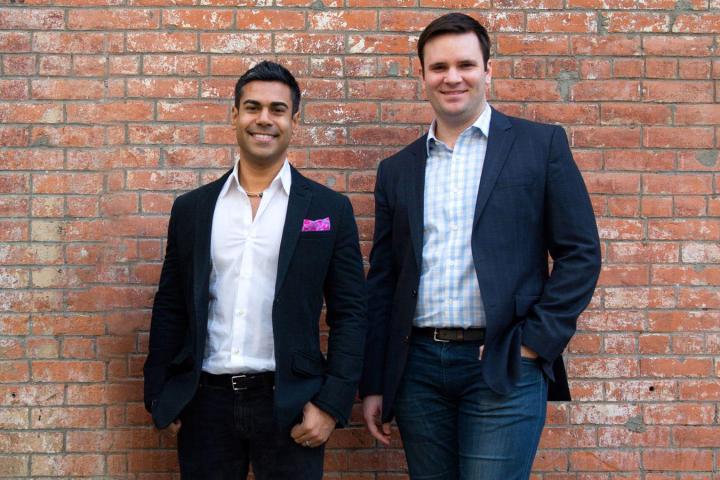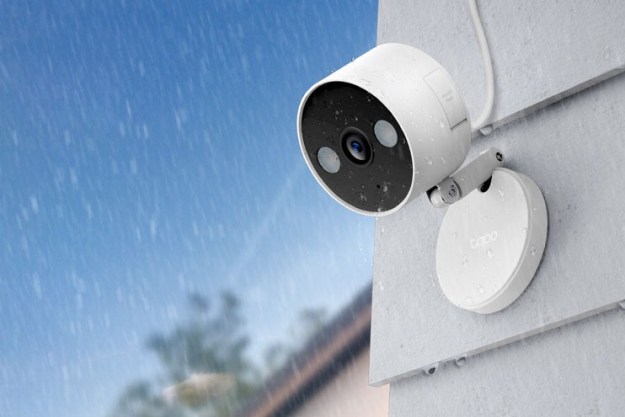
Their segment ended with the entrepreneurs accepting Robert Herjavec’s offer of $750,000 for 13 percent of the company. It wasn’t quite what Fant and Hussain were asking for — the wanted the same amount of money for 10 percent — but they were still pleased with the outcome. Here’s how they got to that point.
“We made sure every week to show we were making progress as a company, as well as reassuring that we would be great on television.”
First, the men were lucky enough to be approached by an executive producer of the show who had read about them in Inc.’s 2014 Coolest College Startups article. Applying seemed like an easy choice. “We knew the reach it [the show] has,” says Fant. There was still what Fant calls an “onerous” application to complete, including an audition video, though the executive producer promised theirs would be put on top of the pile. Six weeks later, two different producers called to say Keen had made it to the next round.
Over the next three months, Fant and Hussain were in weekly contact with their “handlers,” who walked them through their pitch and grilled them, Shark style. “As long as we keep calling,” the producers told them, “you’re still in the running.”
“We made sure every week to show we were making progress as a company, as well as reassuring that we would be great on television,” says Fant. It paid off, and the producers decided the Smart Vent would make a great product for Shark Tank.
The Keen team’s segment was actually filmed back in August, when the show flew them to L.A. for three days. The first day was spent undergoing further screening. Filming took place the next day, after an eight-hour wait for their slot. Finally, they opened the doors and walked into the Tank.
“I had never even watched before being on,” says Hussain. “That contributed to my not being intimidated by what was going on.” The rest of the process took an hour and half — all in one take, with no cuts. “What you see is what you get,” says Hussain, albeit “brutally” edited to about eight minutes. In the show, much of the negotiation gets lost. You see Mark Cuban reject the Smart Vent as “a feature, not a product,” followed by Lori Greiner’s declination. Once they managed to coax an unsatisfactory offer from Kevin O’Leary, “Damon [John]’s offer was that quick to come in” says Hussain. “We started to sense the excitement in the room,” and the tone seemed to change when Hussain mentioned they’d pre-sold 35,000 units to Lowe’s.
Among the other things left out of the final edit were Hussain and Fant leaving the Tank to discuss an offer from O’Leary and Greiner. They’d managed to turn the “Queen of QVC” around with their willingness to be flexible on marketing and commitment to aesthetics as well as function. Fant and Hussain also pitched discussed their next product, which turns existing sump pumps into connected devices that help avoid catastrophic basement flooding.
“It’s not going to the Tank to do a deal; it’s going to the Tank to evaluate the opportunities and see what comes of it.”
Herjavec’s interest ultimately stemmed from the new product and insurance companies’ interest in it, as well as Keen’s vision and mission. But Shark Tank is a two-way street, and the entrepreneurs had to also accept his deal. “Robert is a tech entrepreneur; and he really believed in the company, believed in the vision, so it was really a no-brainer,” said Hussain.
The co-founders were willing to walk away entirely if they didn’t get a deal that made sense for them. “Any smart company who goes in there should do some sort of scenario analysis — this is the acceptable range that we’re willing to take,” says Hussain. Because they’d recently had a valuation set by other investors, it made it easier for them to reject some offers, like John’s. While smaller outfits are probably ecstatic just to get an offer from a Shark that will bring them money and exposure, companies that are already venture-backed can be more choosy. “I would definitely counsel companies that are in that category to make sure they weigh the risk and rewards of taking too low of a valuation from the Sharks,” says Hussain, “because it does send a certain type of signal to some of the other professional investors out there.” Don’t be afraid to walk away, Fant adds: “It’s not going to the Tank to do a deal; it’s going to the Tank to evaluate the opportunities and see what comes of it.”
Though its episode only recently aired, Keen has seen a between 50- and 100-times increase in traffic to its site. “It’s more than we could’ve even hoped for,” says Hussain. “We’re very happy for the exposure.”


